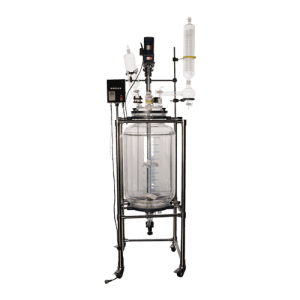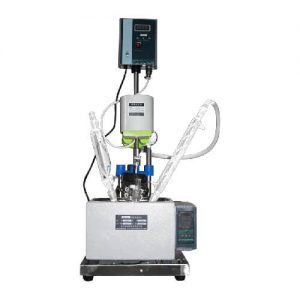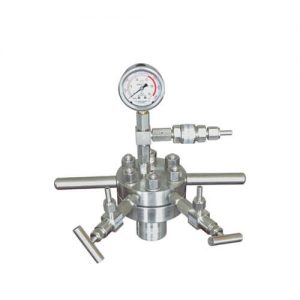What are Lab Reactors?

The lab reactor refers to the vessels for physical or chemical reactions that is primarily composed of four components, including the inner tank, jacket, stirring device, and supporting seat.
What are Types of Lab Reactors?
There are two main types of lab reactors in terms of their various materials of the above products, which are glass reactors and stainless steel reactors respectively.
1. Glass Reactor

Specifically speaking, the glass reactors can be further divided into single-layer glass reactors and double-layer glass reactors. They are mainly used to heat or cool the reaction material thermostatically and stir them. The reactors can be used to conduct vacuum stirring reaction, distillation, concentration, separation, extraction and materials heating. After reaction, materials can be easily released from the cover or the lower outlet of the reactor. Moreover, the reactor is universally employed in chemical experiments, fine chemicals industry, bio-pharmacy and synthesis of new materials.
2. Stainless Steel Reactor

The stainless steel reactor is a kind of reaction device mainly made of stainless steel. It is mainly composed of the tank, jacket and stirring system. The parts exposed to materials all adopt high-quality stainless steel, such as SUS304 and SUS316L, which conforms to the GMP standard. The stainless steel reactors have a wide application areas. It is suitable for high temperature and high pressure chemical reaction experiments in petroleum, chemical industry, medicine, metallurgy, scientific research and colleges and universities. It can achieve the effect of high stirring for both viscous and granular materials.
Jacketed Glass Reactor VS. Double-Layer Glass Reactor
What is a jacketed glass reactor, and is it as same as a double-layer glass reactor?If simply viewed from the structure, actually both the jacketed glass reactor and the double-layer glass reactor are composed of the reactor body, the reactor cover, the jacket, the transmission equipment, the shaft sealing equipment, the agitator, the supporting and other parts. And they adopt same stirring methods, such as paddle type, anchor type, turbine type. Both of them are made of GG17 high borosilicate glass, with good chemical and physical properties. It is safe and reliable to operate them continuously due to their rotating speed is relatively constant.
However, the double-layer glass reactor carries out the stirring reaction by putting the reaction solvent in the inner layer, and the interlayer carries out the constant temperature heating or cooling reaction by connecting the heat or sold source. But for the jacketed glass reactor, the interface of its glass interlayer can carry out the heating reaction by connecting and circulating hot oil, and do the cooling reaction by connecting the cooling source. Hence, there are some differences between the double-layer glass reactor and the jacketed glass reactor.
[title text=”Related Products” tag_name=”h2″ color=”rgba(32, 163, 219, 0.81)”]
[ux_products ids=”175,7410,10220,192″]
[title text=”Related Posts” tag_name=”h2″ color=”rgba(32, 163, 219, 0.81)”]
[blog_posts style=”vertical” columns=”1″ columns__md=”1″ depth=”2″ slider_nav_style=”simple” slider_nav_position=”outside” ids=”1621″ image_height=”89%” image_width=”43″]
